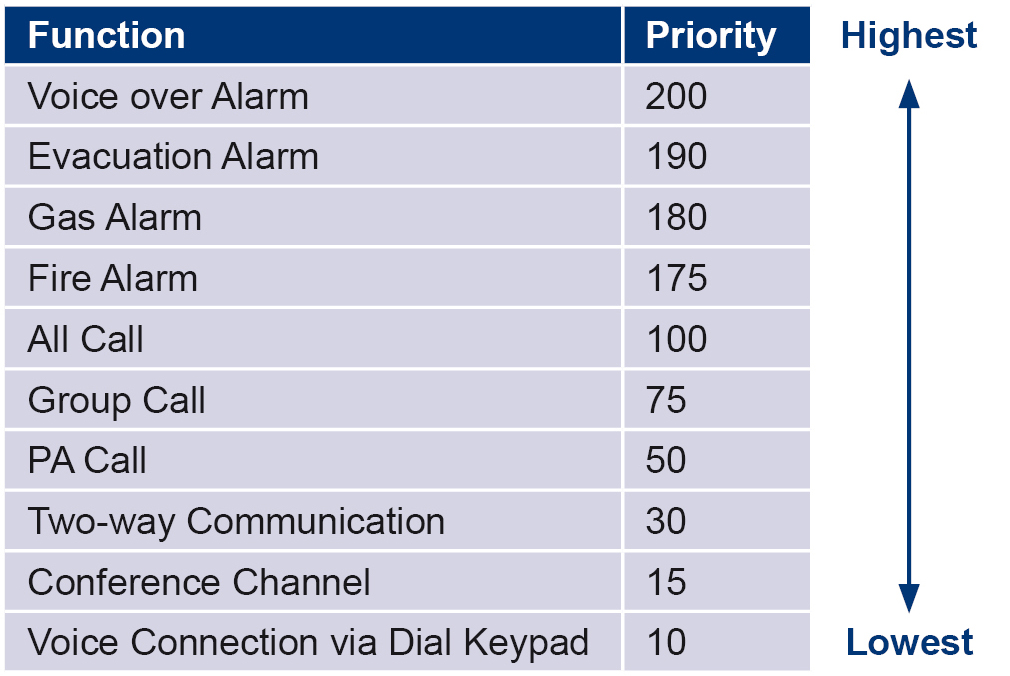Industrial communication and public address systems provide various functions. They propagate life-saving information in dangerous situations, ensure fast and process-related communication and provide various interfaces (see Intercom and PA/GA).
Communication procedures can be assigned with different priority levels so that the operators maintain control over the situation. This is the case, when several events occur at the same time, e.g. a voice connection needs to be established and an alarm triggered. Based on the priority, the system decides which function is executed.
Priority Levels
Priorities can be assigned to any type of function, depending on how important and urgent this function is. Here, the following rules apply:
- Each function can have its own priority.
- Functions with higher priority override functions with lower priority.
- Functions with the same priority are equal and cannot override each other. The function which has become active first, remains active.
The following table shows a common way to assign priorities. It shows the priorities in descending order, e.g. Voice over Alarm overrides all other functions:

Priority Design
Usually, less important functions have the lowest priority (e.g. background music). Communication functions such as two-way connections have an average priority, whereas alarms always have the highest priority. This means that each connection or function is interrupted temporarily when an alarm is triggered ensuring that life-saving information is immediately distributed throughout the areas affected.
Furthermore, you can assign individual priorities to alarms of a comprehensive alarm scenario – depending on the type of danger. Fire and smoke are usually noticed faster by people as you can see it with your own eyes or smell it. Things are different with gas that hardly smells. Hence, it usually makes more sense to assign a higher priority to a gas alarm than to a fire alarm.
Conclusion
By assigning priorities you can significantly influence the system behavior and clearly control the communication between several parties. Additionally, unambiguous visual signaling at the key LEDs helps employees to recognize which functions are currently active and if it’s possible to override them. In one of my next articles, you’ll find an overview and explanation on the different signaling types.